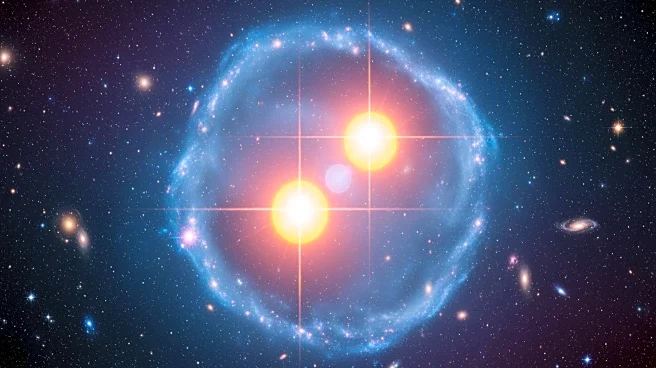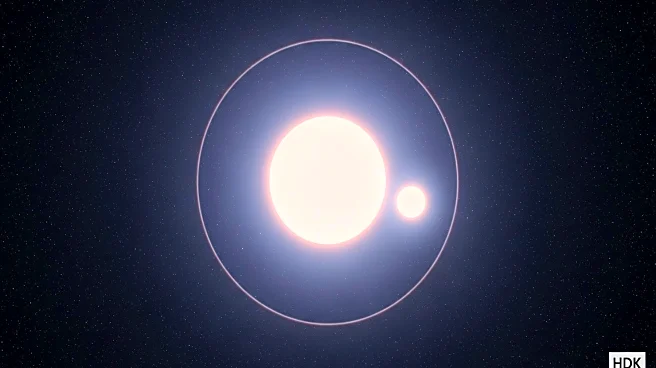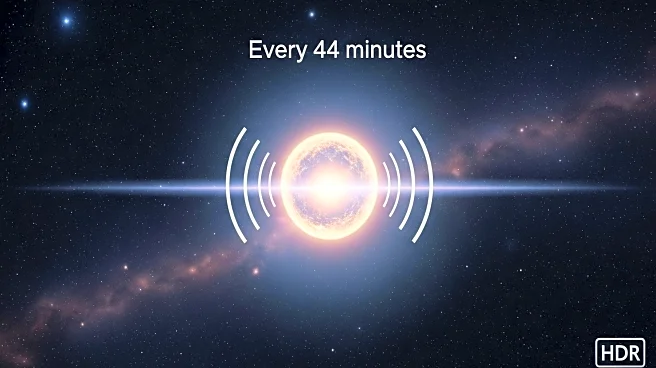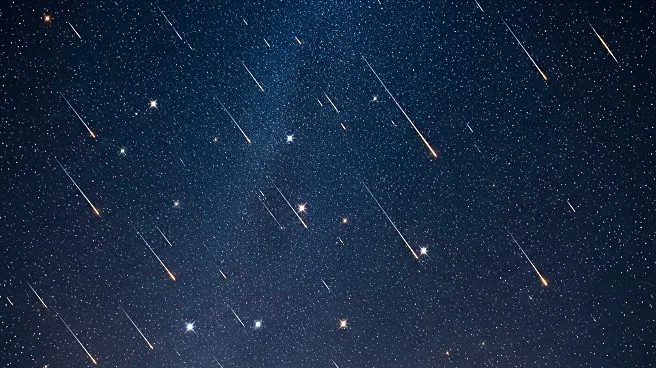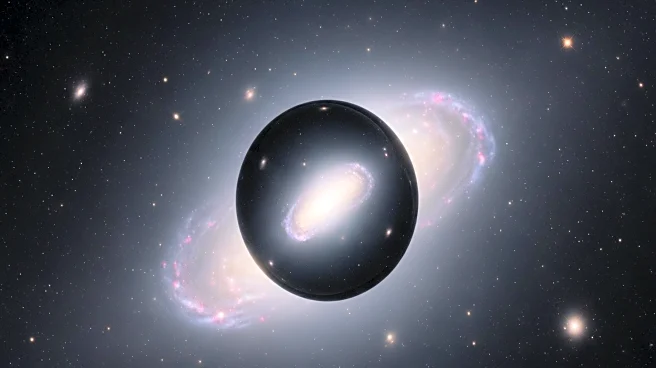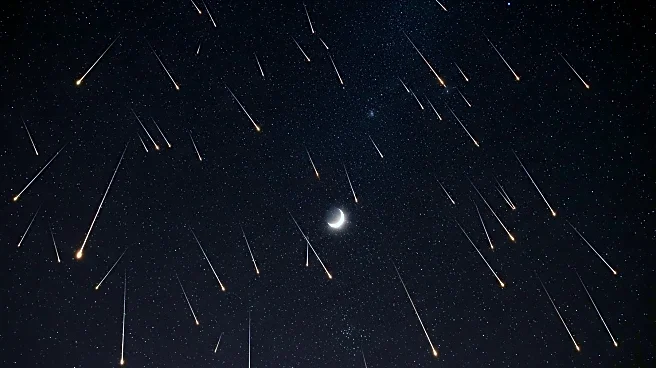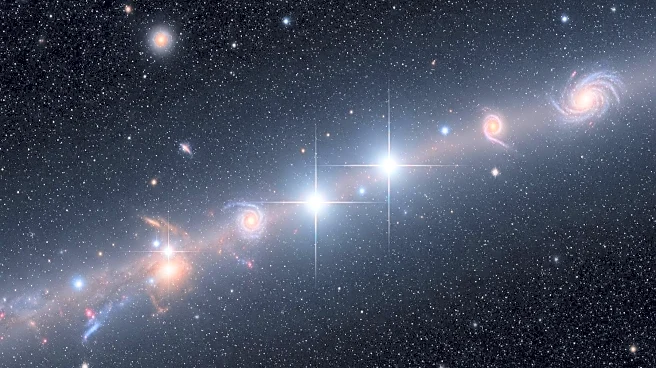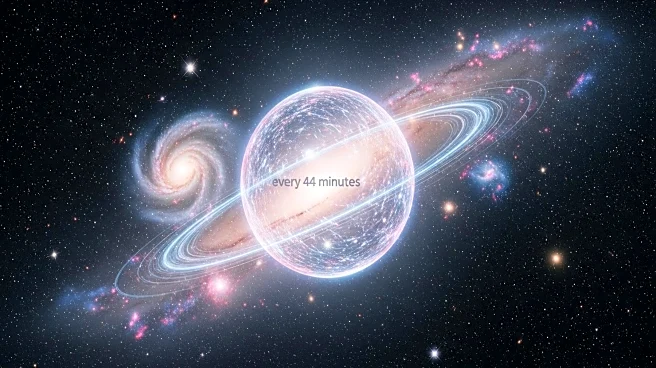What's Happening?
Astronomers have identified a surprising companion to Betelgeuse, one of the brightest stars in Earth's night sky. Contrary to expectations of a white dwarf or neutron star, the companion is a young, Sun-like
star. This discovery was made using X-ray images from the Chandra X-ray Observatory, which showed no signs of X-radiation typically emitted by white dwarfs or neutron stars. The companion, designated α Ori B and nicknamed Siwarha, is believed to be an F-type star still settling into the main sequence. This finding suggests both stars formed together about 10 million years ago, with Betelgeuse nearing the end of its lifespan while Siwarha's is just beginning.
Why It's Important?
The discovery of Siwarha as a young star rather than a white dwarf or neutron star offers new insights into the evolutionary history of Betelgeuse and its binary system. This challenges existing models that suggest stars born together should have similar masses. The extreme mass ratio between Betelgeuse and Siwarha opens up a new area of study in binary star systems, potentially altering our understanding of stellar evolution and the dynamics within such systems. This could have implications for astrophysics research, particularly in understanding how massive stars interact with their companions.
What's Next?
Further research is likely to focus on understanding the dynamics of the Betelgeuse binary system and the implications of having a young star as a companion. Scientists may explore how this discovery affects existing models of stellar evolution and binary star systems. Observations and studies could be expanded to identify similar systems, providing a broader understanding of extreme mass ratio binaries and their characteristics.
Beyond the Headlines
The discovery of Siwarha as a young star in the Betelgeuse system may prompt a reevaluation of how binary systems are formed and evolve. It raises questions about the processes that lead to such extreme mass ratios and how they affect the lifecycle of stars. This could lead to new theories and models in astrophysics, potentially influencing future research and exploration of binary star systems.
